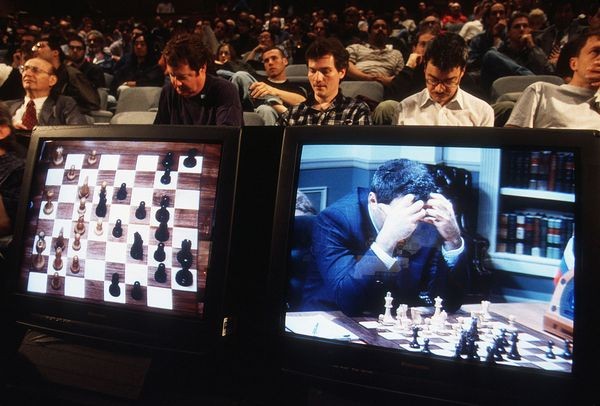
You need jokes.
Maybe you’re giving a speech
and want a few jokes to help make your points stick.
Maybe you’re writing for social media,
where jokes can grab an audience’s attention.
Maybe you’re a standup comic
looking for some fresh material.
So how do you get jokes?
You could write them yourself. But that’s hard.
You could study how to write jokes, then try again. But that would take a lot of time.
You could pay somebody to write jokes for you. But that could be expensive.
Instead…

Why not generate jokes with AI?
You’ve probably read about all the amazing things a large language model (LLM) like ChatGPT can do. Why couldn’t you get ChatGPT to write jokes for you, for free?
You could. But they wouldn’t be good jokes. If you’ve ever tried using ChatGPT as a comedy writer, you’ve undoubtedly found that it isn’t very funny. As this article in Popular Science says, “Despite their immense capabilities, AI can’t tell a joke.”
Why can’t AI write jokes?
ChatGPT and other AI language models can’t write good jokes because they can only mimic the surface patterns of jokes that they’ve been trained on, jokes that people have already written. That means AI language models can’t write jokes that are actually surprising.
And because a joke has to be surprising to be funny, jokes written by AI alone aren’t funny. As that Popular Science article says about ChatGPT, “…its comedic repertoire was likely learned and memorized during its training phases, and not generated on the fly.”

But there must be a way to use AI to write jokes.
By themselves, AI language models can’t write good, original jokes.
But an AI system can if it’s explicitly told how to structure a joke.
Enter Witscript.
This app can write a joke.

Witscript is an AI-powered web app created by me, Joe Toplyn, four-time Emmy winner and author of “Comedy Writing for Late-Night TV.”
Witscript is a hybrid of an LLM and the professional joke-writing techniques in my book. I’ve taught those techniques to thousands of people through my book and classes, and now I’ve taught them to an AI system.
Witscript is the product of sending an LLM like ChatGPT to joke school.
So to answer the original question, here’s how you can write a joke with AI.
Write original jokes fast with Witscript.
You can use the Witscript app to write the jokes you need,
or as a tool to kickstart your comedy creativity.
For more information about Witscript, click here.
And to see lots of jokes Witscript wrote, check out the sidebar nearby, or click here.


 Writer Stephen King gets much closer to making sense when he recommends this: “If you want to be a writer, you must do two things above all others: read a lot and write a lot.”
Writer Stephen King gets much closer to making sense when he recommends this: “If you want to be a writer, you must do two things above all others: read a lot and write a lot.” After you’ve read a lot of how-to books and scripts, then, and only then, write something yourself.
After you’ve read a lot of how-to books and scripts, then, and only then, write something yourself.


 The only difference is that for a roast joke, the topic is “I’m paying tribute to [Name of the Roastee].”
The only difference is that for a roast joke, the topic is “I’m paying tribute to [Name of the Roastee].”


 “Rob has been in some of the most successful movies of our lifetime…I’m sorry, on Lifetime.” — David Spade
“Rob has been in some of the most successful movies of our lifetime…I’m sorry, on Lifetime.” — David Spade “Ann Coulter, if you’re here, who’s scaring the crows away from our crops!?” — Pete Davidson
“Ann Coulter, if you’re here, who’s scaring the crows away from our crops!?” — Pete Davidson If you’re roasting a celebrity, your jokes can be a lot harsher because in that case you’re “punching up.” The audience for a celebrity roast feels that because the celebrity is richer and more famous than they are, it’s okay to laugh at brutal jokes. It’s doubly okay because the celebrity has obviously agreed to be roasted.
If you’re roasting a celebrity, your jokes can be a lot harsher because in that case you’re “punching up.” The audience for a celebrity roast feels that because the celebrity is richer and more famous than they are, it’s okay to laugh at brutal jokes. It’s doubly okay because the celebrity has obviously agreed to be roasted.









 In our hypothetical joke topic, the two handles are “airline employee” and “two hundred eighty two thousand dollars.”
In our hypothetical joke topic, the two handles are “airline employee” and “two hundred eighty two thousand dollars.”



 That’s because I understand that the page is never blank. Okay, I’m exaggerating a little. The page is blank, but only for a few seconds. Here’s what I mean.
That’s because I understand that the page is never blank. Okay, I’m exaggerating a little. The page is blank, but only for a few seconds. Here’s what I mean.








 “In Madrid, police arrested a woman with 4 lbs. of cocaine hidden in her breast implants. The good news: she’s now engaged to Charlie Sheen.”
“In Madrid, police arrested a woman with 4 lbs. of cocaine hidden in her breast implants. The good news: she’s now engaged to Charlie Sheen.”